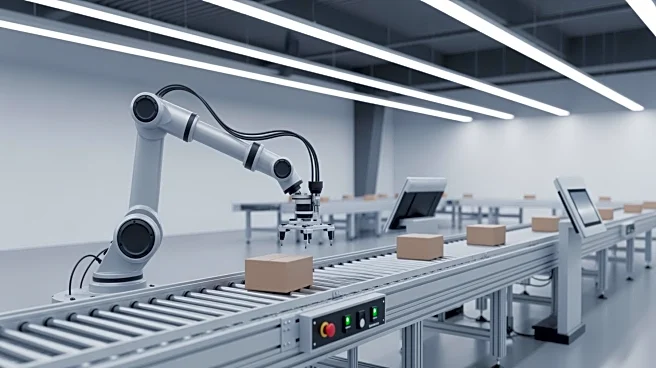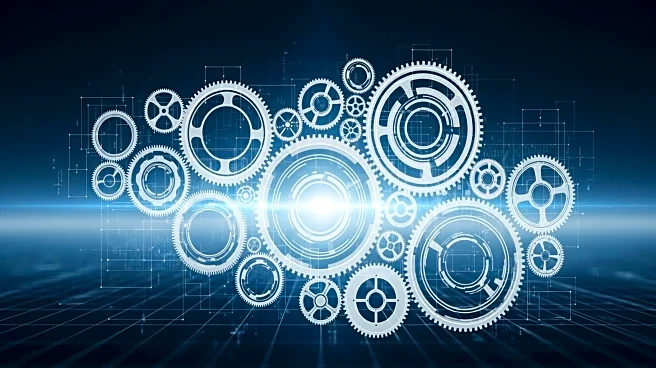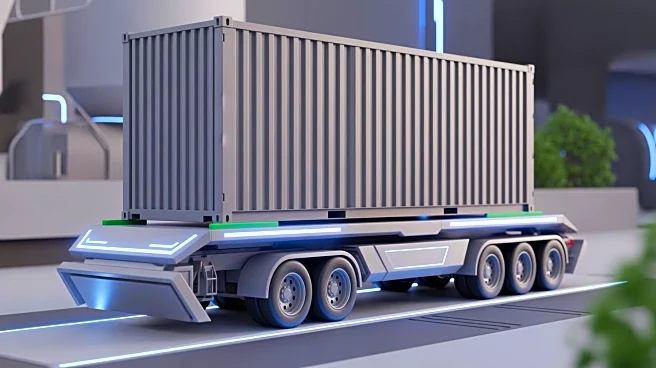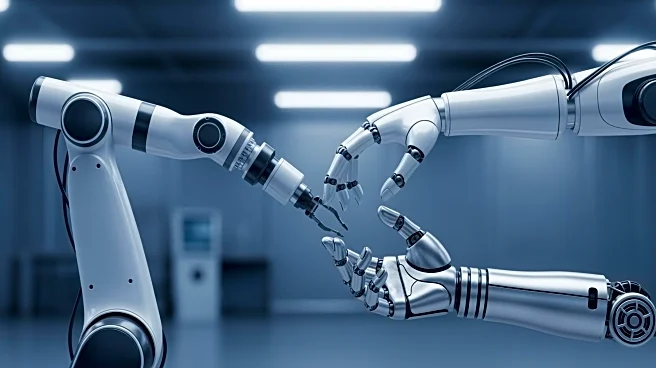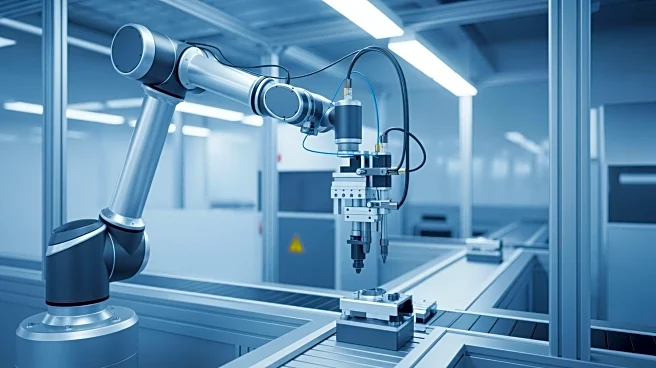What's Happening?
Automation and AI are transforming warehouse operations by augmenting human capabilities rather than replacing them. Companies are using AI to assign tasks based on skill and priority, reducing bottlenecks
and increasing throughput. Robots handle repetitive tasks, allowing human workers to focus on oversight and problem-solving. This shift is leading to a 20% to 30% increase in productivity. Smart machinery, such as forklifts with advanced safety features, is becoming standard, reducing workplace injuries. The World Economic Forum projects that half of warehouse workers will need reskilling by 2025 due to these technological advancements.
Why It's Important?
The integration of AI and automation in warehouses is crucial for enhancing productivity and safety. By automating repetitive tasks, companies can reduce errors and improve efficiency, which is vital for maintaining competitive advantage in the logistics industry. The shift towards automation also necessitates reskilling workers, highlighting the importance of workforce adaptability in the face of technological change. This transformation supports the evolution of human roles from manual labor to more technical and supervisory positions, ensuring job security and career growth in the long term.
What's Next?
As automation continues to evolve, companies will need to invest in training programs to reskill their workforce. The focus will be on developing technical skills required to manage and operate advanced machinery and AI systems. Businesses may also explore further integration of AI to optimize supply chain operations, potentially leading to new job roles and opportunities. Stakeholders, including industry leaders and policymakers, will likely engage in discussions on the implications of automation for employment and economic growth.
Beyond the Headlines
The ethical implications of automation in warehouses include ensuring fair labor practices and addressing concerns about job displacement. Companies must balance technological advancement with social responsibility, providing support for workers transitioning to new roles. Additionally, the cultural shift towards a tech-driven work environment may influence workplace dynamics, requiring new approaches to team collaboration and communication.


